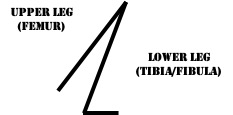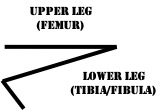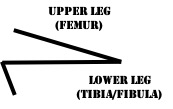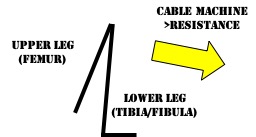Which leg exercises work best for quad development?
Leg work has become almost religion in some fitness circles. Quad-rophenia. Or maybe better said, quadri-mania. Whole social media sites are devoted to squatting. Post after post and blog after blog coach and argue leg exercise minutia, like whether knee-over-toe is a good thing or not, and entire exercise routines on improving ankle dorsiflexion for the sole purpose of squatting better. Few even ask: should I (or this client) even be squatting?
Indeed, well-developed legs make a physique look balanced and well-rounded. Gym-goers with muscular upper bodies and comparatively under-developed legs are–justifiably in my opinion–made merciless fun of.
Feared and revered
Leg days are feared and revered. Feared due to their difficulty: the oxygen requirement; the burn; the discomfort many of the sacred leg exercises inflict. Revered due to what their practitioners look like. Few question the exercises of choice, with the squat at the top of the list. Squatting has become mandatory. Not squatting has been turned into an insult: “Dude! Do you even squat?”
I wonder what would happen if there came a bodybuilder with incredibly well-developed legs who could proudly answer, “Well, as a matter of fact, I don’t squat.” Turns out, there is. Doug Brignole won Mr. Universe last year without doing a single squat…at least not a traditional one. Nor did he do dumbbell squats, front squats, split squats, T-bar squats, hack squats, or leg presses. Not coincidentally, Doug, along with Tom Purvis (a former Mr. Oklahoma), are among the few who’ve taken a scientific look at how muscles work, their functions, and how to maximally load them without introducing risk of injury.
The quadriceps’ job
The quadriceps’ job is to straighten the leg. That’s it. Mechanically speaking, the leg when straightened makes us stand up, or kick, or during the eccentric phase, sit back. Squats for sure feature straightening the leg under load.
If we can agree for body part training purposes, muscles are best trained through the greatest possible ranges of motion, then we would be in search of leg exercises that make the leg straighten the greatest distance.
Many consider the ATG (Ass To Grass) squat as the best means to maximize range of motion (ROM) in leg training. While ATGs done well do indeed create a greater ROM than say, a leg press or partial squat, they also introduce significant risk. Spinal flexion is required or the squatter’s “A” to descend far enough to satisfy ATG squat advocates, This sets up an unholy stress on the lumbar spine, as it flexes and extends under load from above, all in the name of greater leg ROM.
Is the squat, and the ATG squat truly the best quad exercise? Which leg exercises work best for quad development?
Setting the stage
- the above assertion that the quads’ job is to straighten the leg, with straightening having different motile effects.
-
resistance through a full Range of Motion should result in greatest training effect.
-
selecting exercises that deliver the above, with the *least* amount of risk, should be selected over those that introduce risk.

A** to Grass Squat
ATG squat. Is it really the best?
Effective alternatives to ATG

Leg extension
And here it is again, showing upper-to-lower leg as they appear during a well-executed sissy squat.

Sissy squat

Cable squat, cable pulleys front and down.
The unconventional squat for greater, safer ROM
I’ve become a huge fan of the sissy squat. Even at 60 years old, I’m getting results I didn’t see from plain squatting in my 20s and 30s, or since then from DB squats, trap bar squats, front squats, lunges, split squats, or leg presses. It’s been quite remarkable.
Sissy squat haters
Some sissy squat critics suggests that forward shearing force of the femur over the tibial head puts the knee at great risk. This is a flimsy argument. The quadriceps-quadriceps tendon-patella-patellar tendon form a musculoskeletal brace over the front of the leg, preventing this from occurring. Their argument would suggest that during a sissy squat, the femur will careen off the tibial plateau like Thelma and Louise’s convertible off the cliff.
Sissy squats do load the knees, as does the landing after dunking a basketball, or forward lunges, or plyo box jumps. They’re probably not for someone who has had total knee arthroplasty, mostly due to the altered anatomy. To the haters: show me the data.
It takes an open mind and a little bravery to defy convention in search of which leg exercises works best for quad development.
